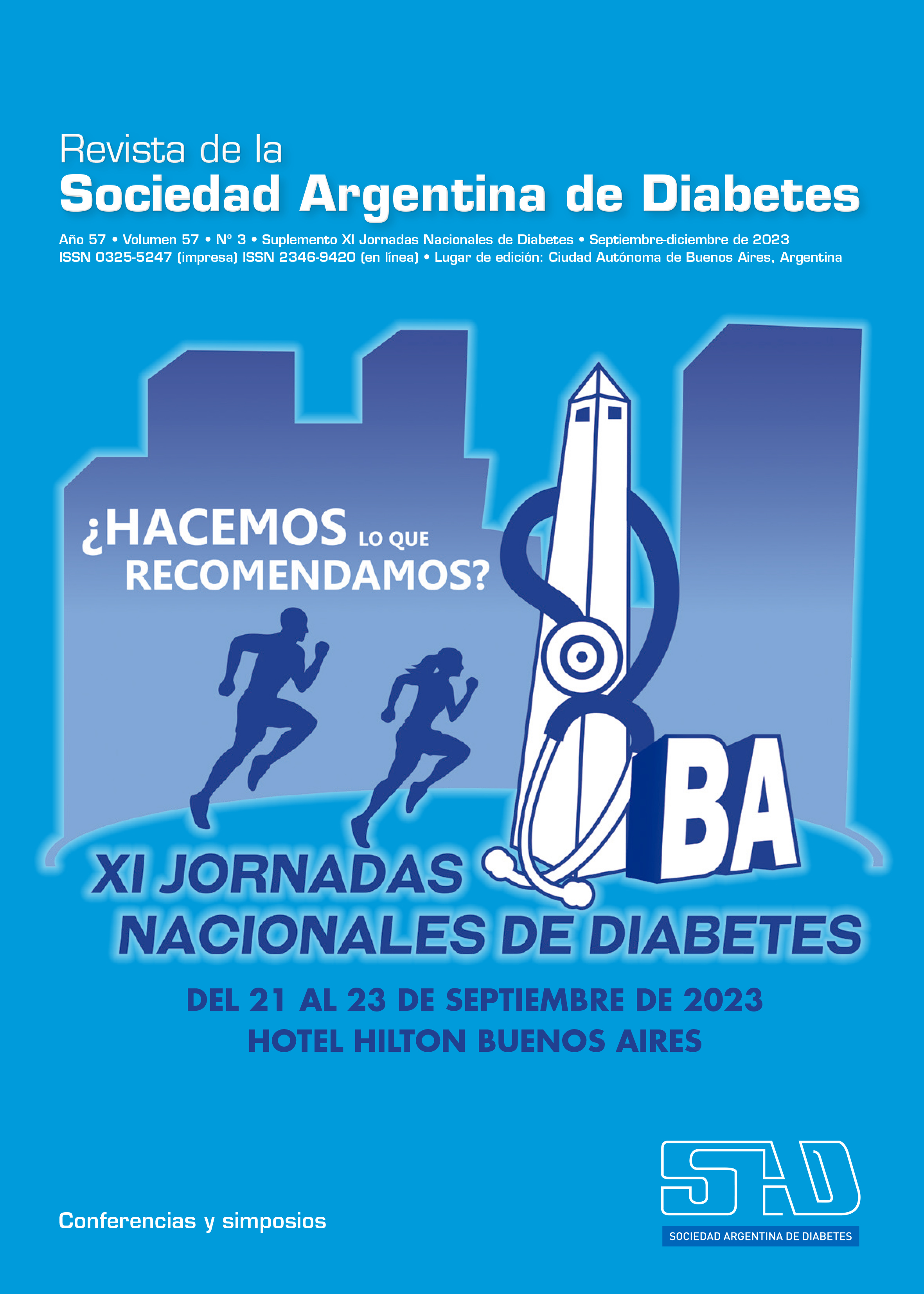Diagnostic controversies. How to orient ourselves in the different scenarios?
DOI:
https://doi.org/10.47196/diab.v57i3Sup.660Keywords:
diabetes, typesAbstract
Diabetes subtype classification and diagnosis in many circumstances can be challenging. Although type 1 diabetes continues to occur in children and adolescents,with severe hyperglycemia and a tendency to ketoacidosis, while type 2 diabetes can occur in adults with obesity, associated with other cardiovascular risk factors andprogressive hyperglycemia, these are the ends of the rainbow. Every day we are faced with complex diagnostic scenarios that can surely vary according to the task group that we are evaluating. In the infant and adolescent stage, Type 1 Diabetes continues to be the most frequent form of presentation and when its presentation is classic, the diagnosis can be made only with the clinical picture. However, the presence of childhood obesity may require differential diagnosis with Type 2 Diabetes or on other occasions the significant family history of Diabetes may lead us to suspect Monogenic forms. In adult-onset Diabetes, the scenario becomes even more complex. Since, as has been described in several works (for example, by Ahlqvist E et al), there are different phenotypes with a predominance of insulin deficiency or insulin resistance. Likewise, immune-mediated DM in adults is currently the most frequent form of presentation of autoimmune DM (even more than in the childhood and adolescent stage). In this case, it does not behave as such a homogeneous group of presentation, since although some (the lowest percentage) may present with ketoacidosis, the vast majority present with progressive hyperglycemia that in many circumstances can simulate forms of DM2 presentation. To add further difficulties in adulthood, people with Diabetes and Obesity may have a subtype of DM called ketosis-prone DM where glucotoxicity in the absence of autoimmunity causes severe insulin deficiency and ketoacidosis. When there are diagnostic difficulties, clinical suspicion is of great importance to guide the complementary studies that will consist, as appropriate, of the request for autoantibodies, C-peptide and/or genetic studies. A correct diagnosis can help us provide personalized treatment.
References
I. Redondo MJ, Hagopian WA, Oram R, et al. The clinical consequences of heterogeneity within and between different diabetes types. Diabetologia 2020 Oct;63(10):2040-2048. doi: 10.1007/s00125-020-05211-7.
II. Hattersley AT, Patel KA. Precision diabetes: learning from monogenic diabetes. Diabetologia 2017;60:769-777.
III. Buzzetti R, Tuomi T, Mauricio D, Pietropaolo M, Zhou Z, Pozzilli P, Leslie RD. Management of latent autoimmune diabetes in adults. A consensus statement from an international expert panel. Diabetes 2020;69(10):2037-2047. doi: 10.2337/dbi20-0017.
IV. Ahlqvist E, et al. Novel subgroups of adult-onset diabetes and their association with outcomes: a data-driven cluster analysis of six variables. Lancet Diabetes Endocrinol 2018 May;6(5):361-369. doi: 10.1016/S2213-8587(18)30051-2.
Downloads
Published
Issue
Section
License
Copyright (c) 2023 on behalf of the authors. Reproduction rights: Argentine Diabetes Society

This work is licensed under a Creative Commons Attribution-NonCommercial-NoDerivatives 4.0 International License.
Dirección Nacional de Derecho de Autor, Exp. N° 5.333.129. Instituto Nacional de la Propiedad Industrial, Marca «Revista de la Sociedad Argentina de Diabetes - Asociación Civil» N° de concesión 2.605.405 y N° de disposición 1.404/13.
La Revista de la SAD está licenciada bajo Licencia Creative Commons Atribución – No Comercial – Sin Obra Derivada 4.0 Internacional.
Por otra parte, la Revista SAD permite que los autores mantengan los derechos de autor sin restricciones.




























